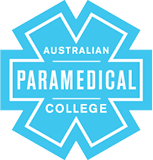
This role has a moderate level of AI exposure. AI can enhance efficiency for some tasks, but this job still relies on human skills and decision-making.
Explore all careersAn Industrial Medic delivers emergency healthcare at remote work sites, responding to accidents, managing injuries, and coordinating patient transport.
Get qualified to work as an Industrial Medic with a course recognised across Australia. Speak to a training provider to learn more.



In Australia, a full time Industrial Medic generally earns $1,500 per week ($78,000 annual salary) before tax. This is a median figure for full-time employees and should be considered a guide only. As you gain more experience you can expect a potentially higher salary than people who are new to the industry.
 Courses.com.au Team
Courses.com.au Team
There has been a strong increase in employment numbers in this sector in recent years. There are currently 19,700 people working in this field in Australia and some of them specialise as an Industrial Medic. Industrial Medics are usually stationed in remote or isolated parts of Australia.
Source: Australian Government Labour Market Insights
 Courses.com.au Team
Courses.com.au Team
If a career as an Industrial Medic interests you, consider enrolling in a Certificate IV in Health Care. This course will prepare you to respond to a range of medical emergencies and includes a work placement so you can gain real world experience. A Diploma of Paramedical Science would also be appropriate.
 Courses.com.au Team
Courses.com.au Team
Browse occupations related to Industrial Medic



If you are exploring Industrial Medic courses in Hobart, you will find a variety of options designed to cater to both beginners and those seeking to advance their skills in emergency medical response. The available short courses are tailored for those who may not have prior experience but are eager to establish a rewarding career in the healthcare sector. Notably, you can enrol in the Provide Pain Management PUAEME008 course or the Provide Emergency Care for Suspected Spinal Injury PUAEME007, both of which are ideal for newcomers aiming to build a strong foundation in industrial medic practices.
The Industrial Medic role plays a crucial part in the healthcare and emergency response fields within Hobart. By choosing Industrial Medic courses in Hobart, learners gain essential skills that are recognised by industry standards and can significantly contribute to the safety and wellbeing of workers in various high-risk environments. Additionally, these courses link to broader fields of study, such as Healthcare courses and Ambulance and Paramedic training, providing pathways for individuals to further develop their careers in these vital sectors.